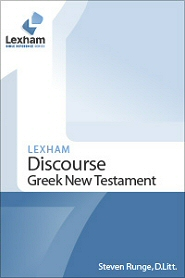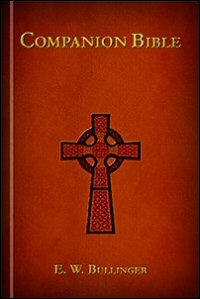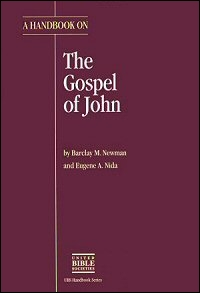
Our understanding of the Greek New Testament is based almost entirely on English translations, but how would our understanding of the Greek text change if we read it for what it is: as Greek? With The Lexham Discourse Greek New Testament, we can now get behind the words of the New Testament writers and discover the particular linguistic tasks that inform translation and interpretation.
| 17 |
| Today | John 11:17–20 |
| Ἐλθὼν | οὖν | Whom or What Spoken | or Written About | ὁ | Ἰησοῦς | εὗρεν | |||||||||
| [when he] arrived | so | [-] | Jesus | found |
| Whom or | What Spoken or Written About | αὐτὸν | ||
| he |
| τέσσαρας | ἤδη | ἡμέρας | ἔχοντα | ἐν | Whom or What Spoken or | Written About | τῷ | ||||||||
| four | already [been] | days | had | in | the |
| μνημείῳ | ||
| tomb |
| 18 | ἦν | δὲ | Whom or What Spoken or Written | About | ἡ | Βηθανία | ἐγγὺς | |||||||||||
| was | now | [-] | Bethany | near |
| Whom or What | Spoken or Written About | τῶν | Ἱεροσολύμων | ὡς | ἀπὸ | σταδίων | δεκαπέντε | |||||
| [-] | Jerusalem | about | [-] | stadia | fifteen |
| 19 | πολλοὶ | δὲ | ἐκ | Whom or What Spoken or Written | About | τῶν | Ἰουδαίων | |||||||||||||||
| many | so | of | the | Jews |
| ἐληλύθεισαν | πρὸς | Whom or What Spoken or Written About | τὴν | Μάρθαν | καὶ | Μαριὰμ | |||||||
| came | to | [-] | Martha | and | Mary |
| ἵνα | παραμυθήσωνται | Whom or What | Spoken or Written | About | αὐτὰς | περὶ | ||||||||
| in order | to console | them | concerning |
| Whom or What Spoken or | Written About | τοῦ | ἀδελφοῦ | |||||
| their | brother |
| 20 | Whom or What Spoken or Written | About | ἡ | οὖν | Μάρθα | ὡς | ἤκουσεν | ὅτι | ||||||||||||||||||||
| [-] | now | Martha | when | she heard | that |
| Ἰησοῦς | ἔρχεται | ὑπήντησεν | Whom or What | Spoken or Written About | αὐτῷ | |||||||||||||
| Jesus | was coming | went to meet | him |
| Μαριὰμ | δὲ | ἐν | Whom or What Spoken or Written | About | τῷ | οἴκῳ | ἐκαθέζετο | |||||||||||
| Mary | but | in | the | house | was sitting |
Runge, S. E. (2008–2014). The Lexham Discourse Greek New Testament (Jn 11:17–20). Lexham Press.

The Companion Bible has been a trusted resource for personal Bible study for almost a century. Originally published in six parts from 1909 to 1922, this classic study Bible features a two-column format, with Scripture on the left and notes on the right, covering Genesis through Revelation. Anglican clergyman and dispensationalist theologian E. W. Bullinger’s notes feature extensive analysis of biblical style…
17 grave = tomb. Gr. mnēmeion. First, a memorial or monument, then a sepulchre. Cp. 5:28.
18 about, &c.( the Hebrew or Greek word in question occurs too many times for all the passages to be given; but that a sufficient number is selected as evidence in favour of such amended rendering) = as it were from (Gr. apo. Ap. 104. iv) fifteen furlongs, i.e. 1¾ miles.
19 of = out of, from among. Gr. ek. Ap. 104. vii. came = had come. to. Gr. pros, as in v. 3 comfort. Gr. paramutheomai; to speak tenderly, consolingly. Occurs only here; v. 31; 1 Thess. 2:11 and 5:14. concerning. Gr. peri, as in v. 13.
20 went and met = met. The word implies desire to avoid notice. sat still = was sitting (Gr. kathezomai). There is no word for “still”, and the A. V. and R. V. insertion of it implies, without warrant, that Mary heard as well as Martha, but nevertheless remained where she was. Compare the other five occurrences of the word, 4:6; 20:12; Matt. 26:55; Luke 2:46 Acts 6:15.
Bullinger, E. W. (2018). The Companion Bible: Being the Authorized Version of 1611 with the Structures and Notes, Critical, Explanatory and Suggestive and with 198 Appendixes (Vol. 1, p. 1546). Faithlife.
Commentary

This set of detailed commentaries provides valuable exegetical, historical, cultural, and linguistic information on the original text. Over the years this series has been instrumental in shedding light on the Scriptures so that translators all over the world could complete the important task of putting God’s Word into the many languages spoken in the world today.
John 11:17 The statement that Lazarus had been buried four days before is to affirm the certainty of his death. Jewish rabbis held the belief that the soul hovered near the body for three days, but after that there was no hope for restoration of life.
In Greek, Lazarus is literally “he,” but several modern translations make the reference explicit. RSV does so by way of a note indicating that the Greek has “he.” A footnote is unnecessary, however, since the meaning can be handled translationally.
He found that must be rendered in some languages “he learned that,” while the passive expression Lazarus had been buried four days before must be changed in some languages to an active one, for example, “people had put Lazarus in a tomb four days before.” However, in some languages it would be improper to speak of “putting Lazarus in the tomb”; it is necessary to say “put the body of Lazarus in a tomb,” to avoid the impression that Lazarus was put in a tomb while he was still alive.
It is essential in choosing a word for buried to indicate that Lazarus was not put beneath the ground in a grave, but rather was placed in a kind of cave. Otherwise, the miracle of his resurrection and coming forth from the tomb would be even more astounding, and, of course, quite inconsistent with what occurs later in this same chapter.
John 11:18 For Bethany, see the comments at 11:1.
Less than two miles (NEB “just under two miles”; RSV, JB “about two miles”) is literally “fifteen stadia.” A “stade” was a Roman measurement of a little more than six hundred feet, and so fifteen “stadia” is a little less than two miles or “about three kilometers.” It seems probable that the close distance between Bethany and Jerusalem is indicated to explain the large number of Jews in Bethany (see verse 19).
John 11:19 In Greek verses 18 and 19 are two separate sentences. TEV combines them into one, thus bringing together the motifs of the short distance between Bethany and Jerusalem and the visit of the many Judeans. In some languages many Judeans can be best expressed as “many people from Judea” or even “many people from that part of the country.”
To comfort them about their brother’s death (Phps “to offer them sympathy over their brother’s death”; NEB “to condole with them on their brother’s death”) is literally “to comfort them concerning the brother.” Either rendering (about their brother’s death or “about their brother”) is legitimate, as is also the rendering of GeCL (“to comfort the two of them”). The verb rendered to comfort appears again in verse 31; elsewhere in the New Testament it is used only in 1 Thessalonians 2:11 (2:12 in TEV) and 5:14, where it seems to have the meaning “to encourage” or “to cheer up.” In some languages an equivalent of comfort may be “to speak helpful words.”
If one translates in this manner, it will be possible to translate the final phrase, more or less literally, “about their brother’s death” or “about the fact that their brother had died.” However, if one uses a verb meaning “to encourage” or “to cheer them up,” it may be necessary to indicate the brother’s death as cause, for example, “to cheer them up because of the fact that their brother had died.”
Embalming was not practiced in ancient Palestine, and so burial took place on the day of death. It was common, therefore, for the mourners to remain and offer their comfort to the bereaved after the time of burial.
John 11:20 In this verse John states that Martha went out to meet Jesus, and in verse 30 that she met him before he came into the village. One cannot say for certain how Martha heard that Jesus was coming; verse 29 seems to imply that Mary had not heard of Jesus’ arrival.
When Martha heard that Jesus was coming must be understood in terms of hearing a report that Jesus was coming. It would be wrong to translate in a way that would suggest that Martha actually heard the noise of Jesus’ approach. One may translate, for example, “when Martha heard someone say that Jesus was coming” or “… had arrived nearby.”
Stayed in the house is literally “was sitting at home.” It was customary for persons in mourning to sit (Job 2:8; Ezek 8:14), as it was for these persons who came to offer comfort (Job 2:13)
Newman, B. M., & Nida, E. A. (1993). A handbook on the Gospel of John (pp. 363–364). United Bible Societies.